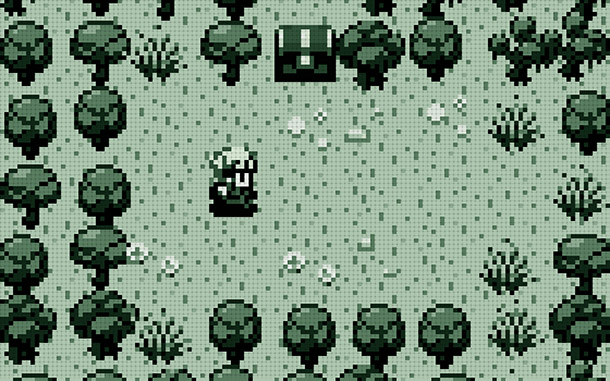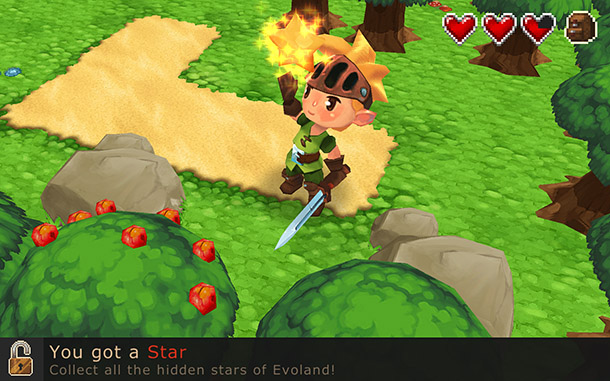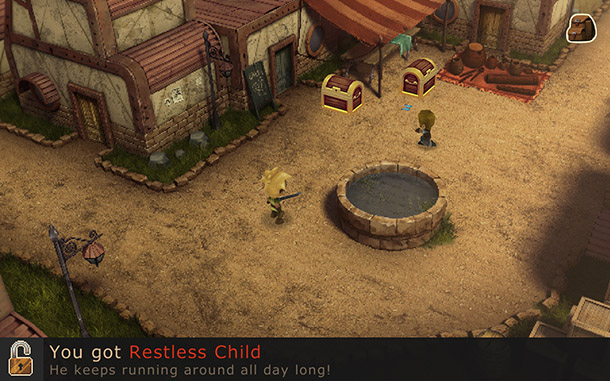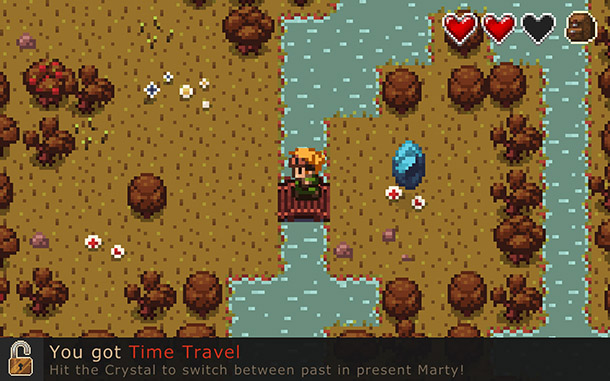Nostalgia is a funny thing. When we wax ecstatically about things from childhood, we tend to think they’d hold up their quality now that we’re adults. That’s rarely the case, though, as any 80s cartoon will reveal. But somehow we still place classics on a pedestal, relying on the memories and experiences they invoke rather than the actual, technical aspects.
“Man, these new games are great. But nothing holds up to the classics,” I think. And then I pop in an old dusty copy of Crystalis and realize that yeah, maybe the olden days really didn’t hold up as well as I thought.

Developer Shiro Games probably had that same realization. It’s not the actual technical aspects we remember, but our reactions to them. Their latest game, Evoland, takes the RPG genre and examines its roots, often exposing how limiting and inaccessible they were at times, and celebrating some of the more fun cliches at others.
Evoland isn’t so much a game as it is a historical salvage of genre concepts, and so going into it looking for a mesmerizing experience will yield poor results. It’s short, lasting only a couple hours or so, and it doesn’t so much have a plot as it does a linear progression path to get to the next trope. There are few characters to interact with, few enemies to attack, and few items to collect. The battles are unfulfilling and the puzzles are far too easy.

In reality, that’s probably fine for the game. None of those details are actually integral to the experience. Evoland functions like a walk through a museum, staring at paintings or sculptures of a bygone era, grabbing just snippets of what that time period actually meant. As the game’s adventure progresses, players are zipped through flashes of different gaming eras, stopping long enough just to say “Oh, I remember that!” It often brings out a smile, too.
As the game unfolds we move from 2D sprites with excruciatingly simple controls to 16-bit sprawling overworlds, to full, HD, 3D models. The music changes from bleeps and bloops to orchestrated symphonies. Battles shift from hack-and-slash to experience gathering, turn-based episodes. Overused staples of the genre are unlocked: the boy chasing a butterfly around a well, the old hag who knows too much, the two halves of the amulet, the “telephone game”-style fetch quests.
We’ve learned to love or hate these things over the years, and Evoland makes it purposefully apparent why.

Influences come from The Legend of Zelda, Dragon Quest, Final Fantasy VII, and more. Some puzzles even have us switching back and forth between different genre styles — going “forward” or “backward” in era, so to speak — to pass by obstacles. In one area, 2D sprites can’t walk over certain tiles but can run through environmental background bushes. Switching to the modern 3D style lets us walk over the tiles, but blocks the way with bushes. It’s a nice touch to an otherwise simple and often dull game.
We talk often about archiving classic games for future generations, but few will really ever play through them again. That’s perhaps why Evoland works well as a concept. It’s a sort of crib notes for people who want to get caught up on what made RPGs the way they are today, just don’t expect it to be a heartwarming or engrossing experience. I always wondered how to get my child to experience classic games and what made them special, to let her appreciate what she’s experiencing today (or in the future). Instead of subjecting her to hours and hours of bad Eighties JRPGs, I’ll let her play through Evoland.
Maybe then she’ll understand why I get upset every time a new Final Fantasy game is announced.

This review is based on a retail GOG code sent to SideQuesting by the publisher, played on a Macbook Pro.



No Comments